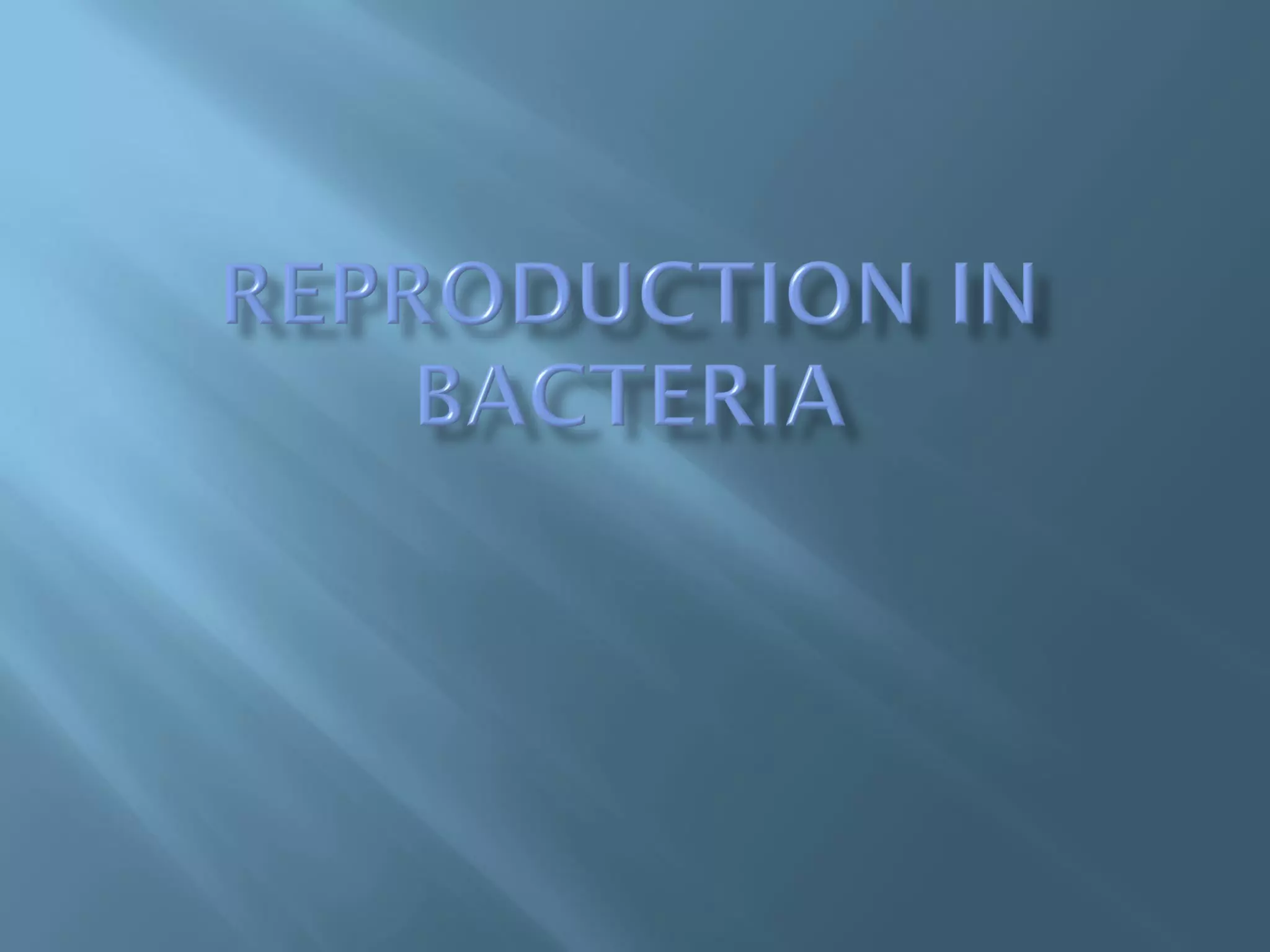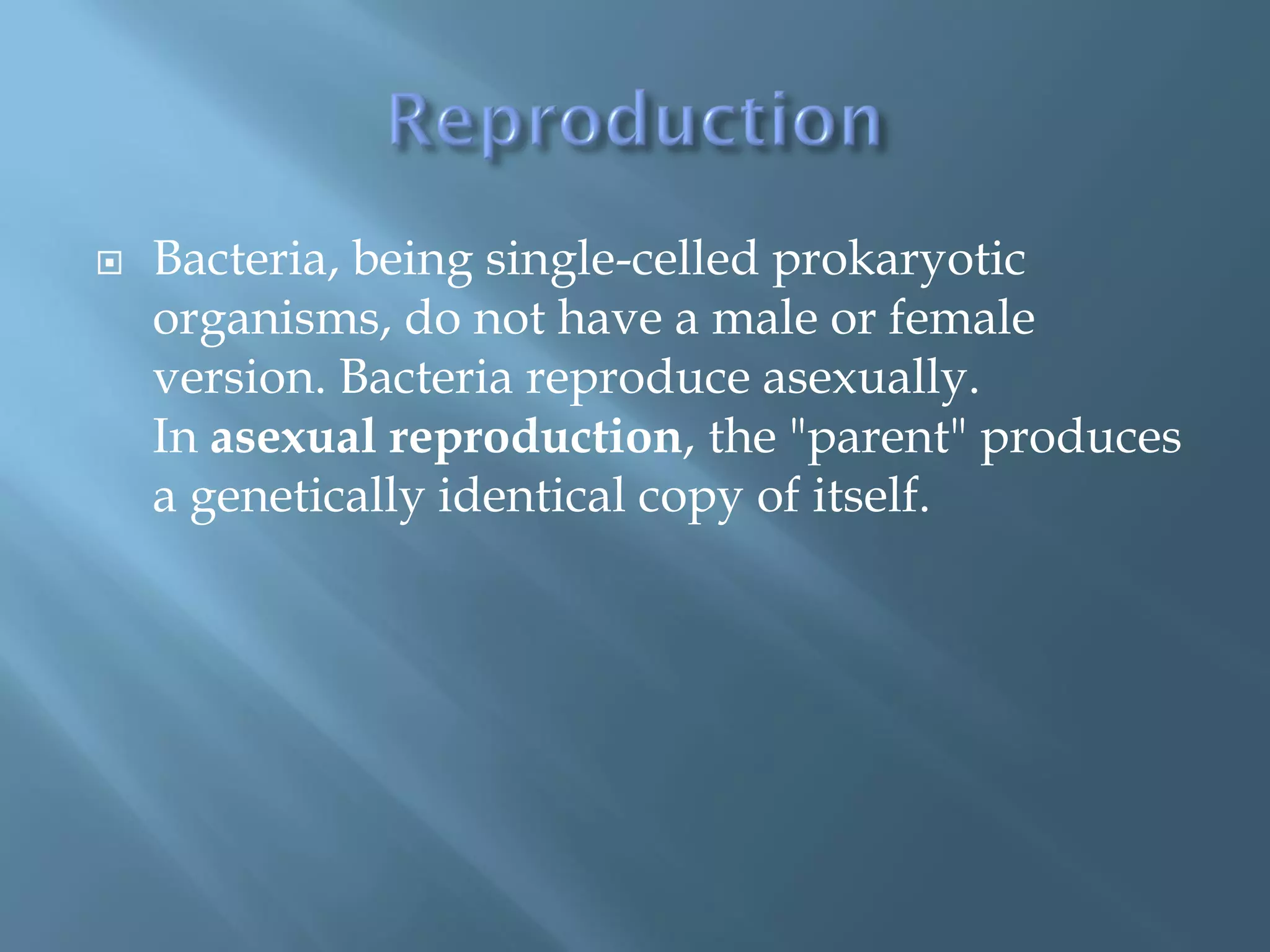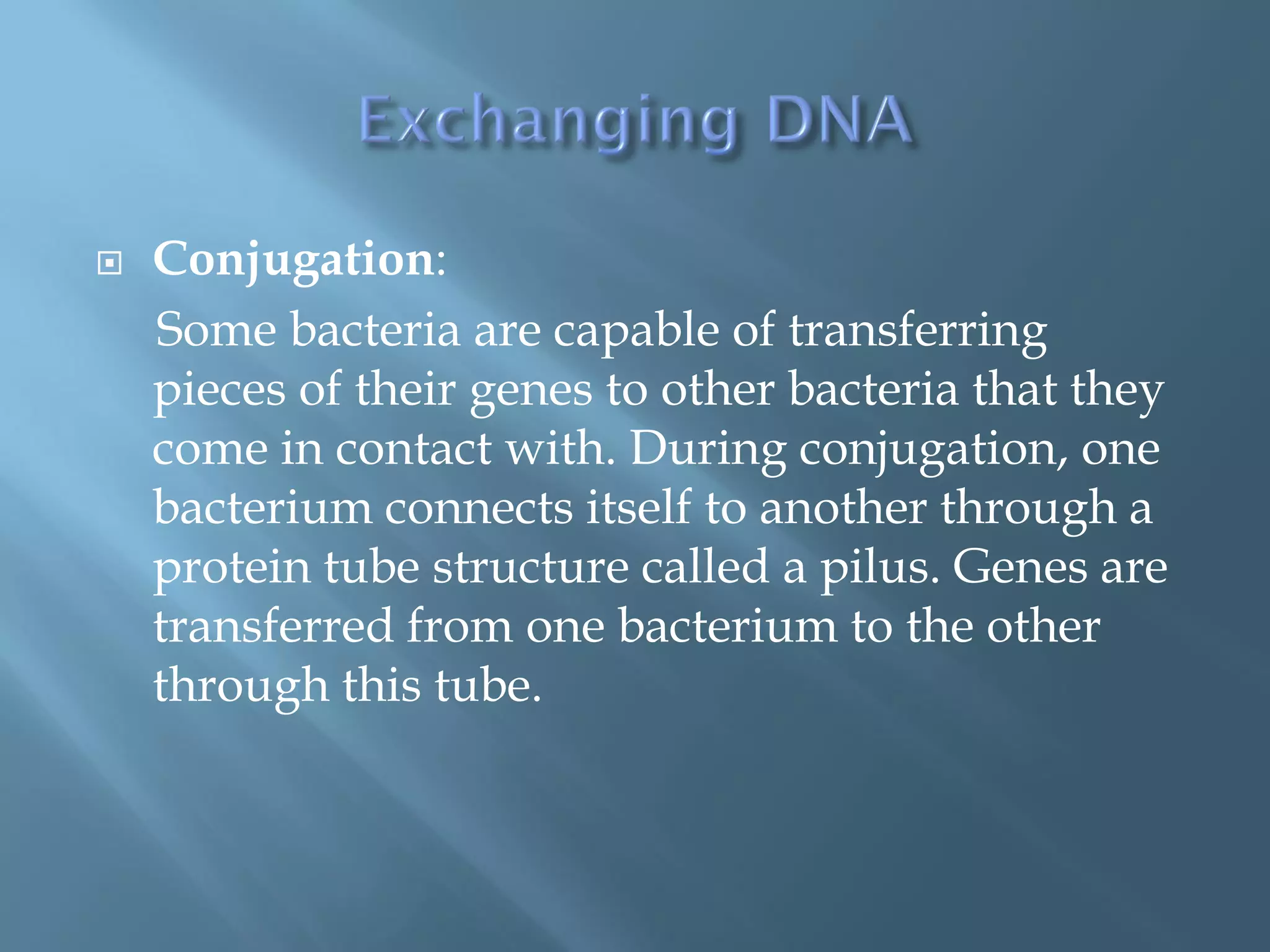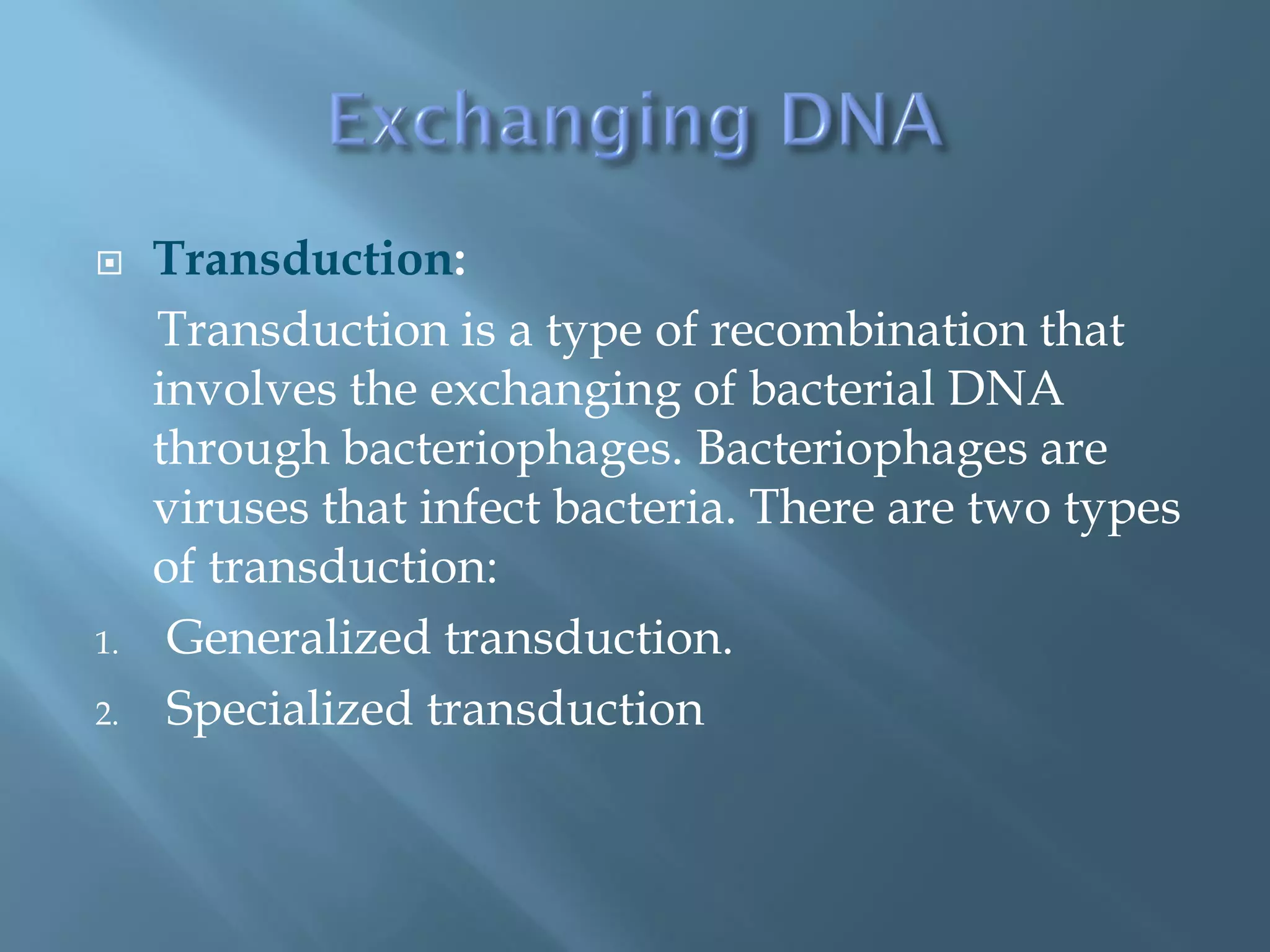Bacteria are single-celled prokaryotic organisms that come in a variety of shapes and reproduce asexually through binary fission. During binary fission, the bacterial cell's DNA replicates and the cell divides into two identical daughter cells. Some bacteria can also acquire new DNA through conjugation, transformation, or transduction, allowing for genetic variation. Under certain conditions, some bacteria reproduce through budding or fragmentation.




















